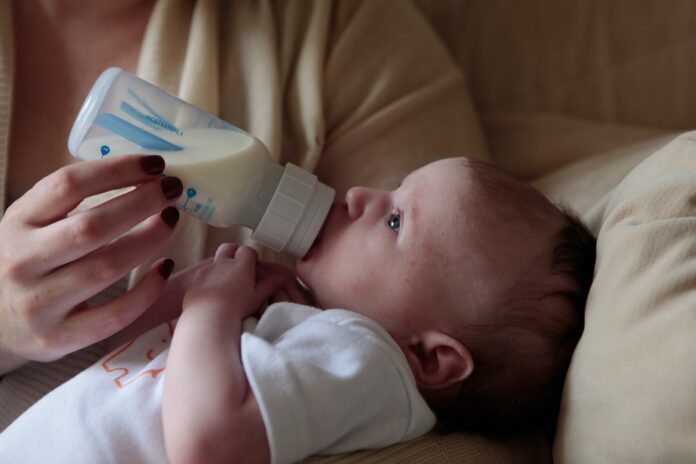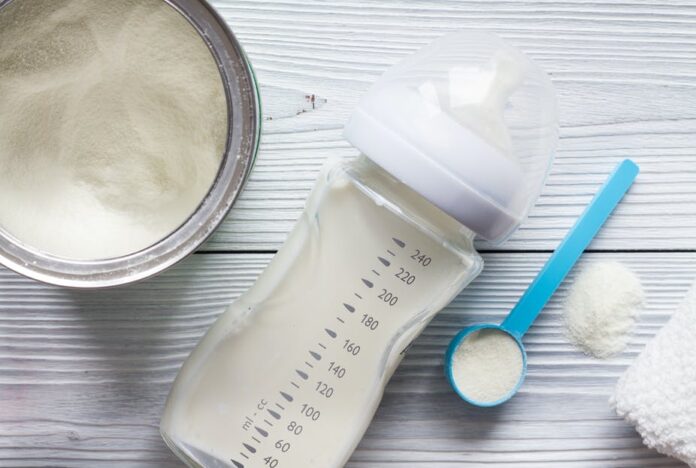Breastfeeding has always been, is, and remains the healthiest choice for a newborn baby. If a baby eats breast milk, and all complementary foods are introduced on time, he gets absolutely everything he needs for healthy growth and development of the body.
But there are times when breastfeeding for some reason becomes impossible, and it becomes necessary to transfer the child to artificial feeding.
But here, too, there are many pitfalls: not every formula can suit the baby. And if it suddenly turns out that the diet should be reconsidered, then there are reasonable questions: “How to choose the best baby formula to better suit the baby,” or in the case of failure, “How do I switch from one formula to another?”
The principles of artificial feeding

If there is a possibility of feeding your baby naturally, then it is better to postpone the question of artificial feeding as long as possible. But if this is not possible, and the child for one reason or another still needs to be switched to a formula, ask your pediatrician.
He will advise you on the right mix, knowing your baby’s characteristics. The doctor will also explain how to transfer your baby to another food if the previous one did not suit him.
When you switch to artificial feeding, you should determine the volume and frequency of feedings. The volume depends primarily on the age, but also the body weight of the child.
As for the frequency of taking formula, then for babies from birth to four months, it is six times a day. From six to ten months – four times a day. And for babies older than a year – twice a day.
What kind of formula is there?

Choosing a formula is not an easy task. They are all different, and not everyone is suitable for your baby. First, it all depends on the age of the baby. And according to this criterion, all existing formula feeds can be divided into three groups.
The first is for children in the first six months of life. The second is up to one year. And the third group includes the formula for children older than one year. The formula is also selected taking into account the health and development of the child.
For healthy babies, the standard formula is suitable. And for children with various digestive problems there are lactose-free, hydrolyzed, sour milk, antireflux, soy-based, and other mixes.
In a separate group, we can include mixes for premature babies. In general, so that the question of how to transfer the child to another formula, with greater likelihood, bypass you, you need to make the process of selecting a substitute for mother’s milk seriously enough.
Also, do not rely on reviews on the Internet or advice from friends. They do not know the characteristics of your baby and proceed only from their own experience. In your case, it may be wrong.
The following facts show that the formula is suitable for your baby:

- Its stools are stable, uniform;
- The baby is sleeping well and developing normally;
- The skin is clean and healthy;
- The newborn has a good appetite.
Only if all of the above signs are present, we can say that the diet is perfect for your baby.
How do I know the formula is not right?

Reasons for changing artificial milk can arise at any age up to a year old. Even after one year, it is better to give your baby formula instead of milk if he is not gaining weight. Problems that require the introduction of a new product:
- Allergic reaction. The baby’s body reacts to the components of the mixture in the form of skin rashes, redness, itching. The baby’s digestive system may not assimilate/absorb sufficiently the proteins, fats, carbohydrates contained in the baby’s milk food. Hypoallergenic foods help overcome food barriers.
- The need for a therapeutic formula is necessary for low hemoglobin, prematurity.
- Transition from therapeutic nutrition to adapted nutrition occurs after the elimination of pathological signs.
- Age 6 months, when it is necessary to replace formula “0” or “1” to “2”.
- After reaching one year, from “2” to “3”.
- Lack of weight gain, frequent regurgitation, refusal of the bottle
You should think about switching from one formula to another in several cases. A baby may start to cry after a meal. Vomiting or continuous stool disturbances follow each meal.
Abdominal pain caused by colic, coming along with bloating and tension. The child is very irritable during the day and wakes up very often at night. There may be a rash on the face, and the skin becomes hard and may feel like sandpaper.
If you find one or more of the above symptoms, you need to see a specialist to explain how to switch to another formula and to advise which one is best for your baby. He will, of course, take into account all the features of your baby’s body.
Sometimes it is advisable to use therapeutic mixes, which allow you to get rid of many of the problems that bother babies:
- Get rid of food allergies;
- Remove frequent belching;
- Enrich the child’s body with iron, which is very important in anemia;
- Normalize the work of the gastrointestinal tract;
- Deliver to the intestines missing beneficial bacteria;
- Help premature babies put on weight;
- The fat-free formula is suitable for babies with digestive problems;
- If a baby is a lactose intolerant, doctors advise choosing artificial lactose-free products;
How do I switch from one formula to another?

It is not necessary to change the formula without a good reason. You should also not unreasonably use hypoallergenic or other special types of food. If switching is necessary, it has to be done in the right way. For example, you feed your baby seven times.
Then at the first feeding, you should give your baby ten milliliters of the new formula, and leave the rest as is. Just remember that you can not mix the mixtures in one bottle. First, we give one and then the other.
All other meals remain on the old formula. If all is well, then the next day, you give twenty milliliters of the new mixture in the first and fifth feedings. Each day, you increase the volume of the new formula by 20 milliliters until both feedings are completely replaced.
Now replace one more feeding with the new formula each day, but at once at full volume. This gradual transition will help the little body best adjust to the change in nutrition.
So if you decide to switch from one formula to another, you do not need to do it just for the sake of variety or because you like colorful advertising. Change of formula must be fully justified because it’s a kind of stressful situation for the child’s body.
And do not forget that for any questions, in any way related to the health of your baby, you should consult your pediatrician. And then the child will be healthy, and his parents – happy and relaxed.




